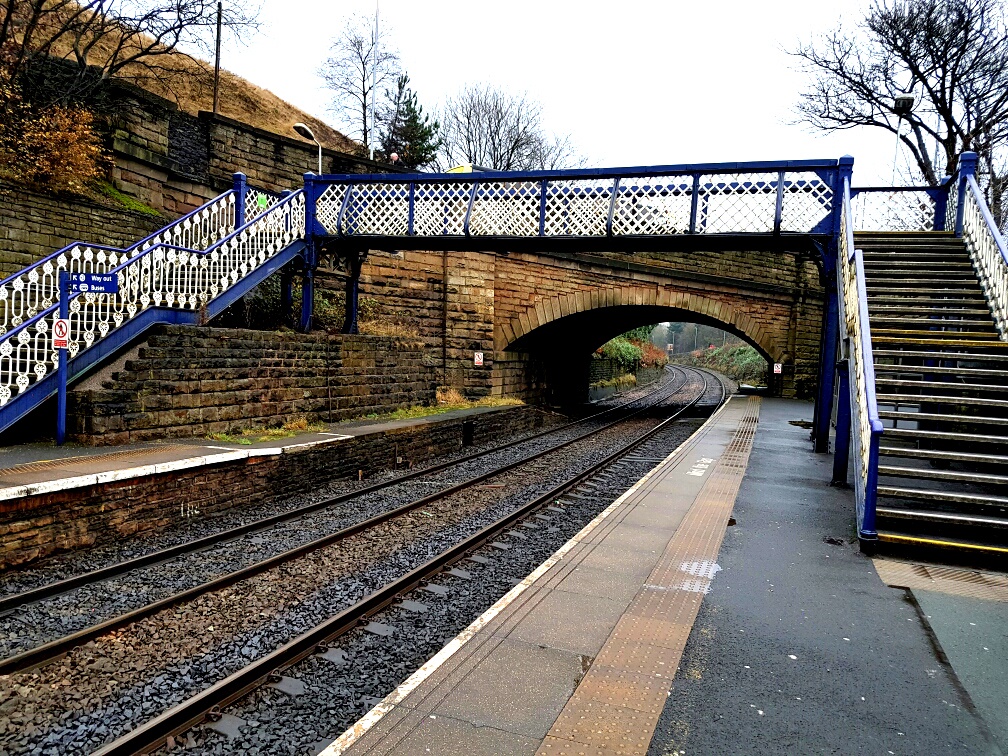05.05.17
The case for change for Greater Manchester stations
 As Transport for Greater Manchester (TfGM) awaits government approval on its proposal to take over all of the region’s rail stations, Amanda White, its head of rail, talks to RTM about the countless benefits this move would bring.
As Transport for Greater Manchester (TfGM) awaits government approval on its proposal to take over all of the region’s rail stations, Amanda White, its head of rail, talks to RTM about the countless benefits this move would bring.
Greater Manchester (GM) has set out ambitious plans to improve the passenger experience of rail customers in the region by submitting a proposal to government to assume long-term responsibility for the region’s 97 rail stations.
The proposal forms part of the area’s 25-year transport strategy, which wants a better deal for passengers by developing a fully-integrated transport system with the needs of the passenger at its heart.
GM sits at the heart of the Northern Powerhouse and expectations are that growth will continue at pace. It is forecast that by 2040 there will be an extra 350,000 jobs in the region and population figures will surpass three million, requiring an additional 200,000 homes.
Planners at TfGM believe this growth will necessitate an additional 800,000 trips on public transport every single day.
Amanda White, TfGM’s head of rail, spoke further about rail station transfer and how it will deliver significant economic, social and community benefits and fulfil GM’s obligations in the 2014 devolution agreement.
“Our ‘Case for Change’ is built upon three core principles: delivering better integrated transport for passengers; developing a greater sense of place within local communities; and investing in local economies by facilitating local regeneration,” she explained.

“We recognise there is significant investment in rail infrastructure across the north of England, predominantly through the £600m Northern Hub programme, and we welcome the 40% increase in rail services this will deliver for our customers who will also benefit from brand new rolling stock.
“We do believe, however, that more can be done and greater investment made with the 97 rail stations across our region, and we believe that our proposal will generate four times the level of current investment and support the government’s ambition for a 21st-century railway.”
New funding and operating model
Documents published alongside the submission indicate that GM’s proposal is predicated on developing a new funding and operating model. They propose that a long lease arrangement with Network Rail, of up to 150 years, is developed, as it is believed this is the best way to provide efficient whole-life asset management with long-term investment models.
Currently rail stations are funded through short-term financing models, which TfGM argues reduces incentives for train operators to invest heavily as there is limited scope to see a return on such investment.
The proposal seeks full local accountability for all station assets and facilities, along with management and staffing responsibilities.

“We believe that limitations exist within the current regulatory arrangements which impede efficient and joined-up investment in stations. We view stations as the missing piece in our transport jigsaw, with unrealised potential for integration, social inclusion and regeneration. Rail could once again take its rightful place as a preferred mode of public transport with stations under local control,” White continued.
“Around 75 million rail journeys start or finish in GM every year and 80% of our stations are over 100 years old. They have great potential to deliver more than ever before. We will seek to modernise the estate, improve access and accessibility from the first to the last mile, deliver safety and security enhancements and develop bespoke plans for each station to ensure that they are fitted out with the right facilities appropriate for the local demographics.
“Whilst we want a consistent quality standard, this is not about delivering identikit stations; it’s about delivering what each individual community and station needs. We will, of course, provide a unified GM appearance and we are uniquely positioned to provide better multi-modal interchange facilities, meaning we are focusing on a customer’s whole journey experience, not just the rail portion.
“In an age of increasing consumer expectations, we believe it is important that our transport assets do not just meet, but exceed the demands of the travelling public.”
What stations can do for communities
TfGM already owns the multi-award-winning Metrolink network, which has grown to 93 stations and nearly 37 million passengers a year, the newly-launched Leigh guided busway, 24 bus interchanges and has management responsibility for the region’s key route road network.
The public information campaign to date has focused on what more rail stations can do for the communities they serve, and not just on their place in the transport network. Much of the messaging from TfGM has projected a vision of helping to contribute to a sense of place for local people.

White, a rail systems engineering graduate who has previously worked for Network Rail and HS2, added: “Fundamental to our plans for rail station transfer is supporting social initiatives, ensuring station assets become a focal point within communities and contributing to an improved quality of life, whether that be through better access to health and wellbeing services, arts and culture, or enterprise, skills and employment.
“Rail station transfer will help stimulate economic investment in local communities and spread economic benefits more widely across our region. We envisage bringing station buildings back into use for the community and helping to regenerate localities by providing land for residential and commercial developments.
“Our proposal is also closely aligned with the principles of our HS2 growth strategies. In the city centre, regeneration opportunities, which includes redevelopment around Oxford Road rail station and a new HS2 station and Northern Powerhouse Rail interchange in the Piccadilly/Mayfield area of the city, have the potential to deliver in excess of 27,000 new housing units by 2025, rising to 40,000 by the mid-2030s.”
Awaiting approval
GM’s proposal has been submitted to government and, whilst much of the 400-plus page submission remains confidential, it is clear that a significant amount of work and research has been conducted by TfGM to suggest a change to the current operating model.
RTM understands that the proposal, which is fully supported by Rail North, is currently being assessed by the DfT, the Department for Local Government and Communities and the Treasury. Approval in principle is expected before the end of summer.

It is also understood that a wide range of industry stakeholders are supporting the government review, including both Network Rail and GM-based train operators.
“We are committed to working closely with industry partners to ensure a pragmatic and seamless transfer with further detailed planning and investment modelling expected over the next 12 months,” White commented.
“Transferring station control to GM makes financial sense, benefits local communities and puts passengers first. This initiative has the opportunity to drive GM’s economic growth and transform lives.
“GM is an ambitious and forward-thinking city-region at the heart of the Northern Powerhouse. It’s recognised across the globe for its innovation and track record for delivery on budget, on time. We understand that rail stations play an important part in the success the regions integrated transport systems, preparing for the increased shift to public transport as the jobs, housing and the economy grows.”
Have you got a story to tell? Would you like to become an RTM columnist? If so, click here.